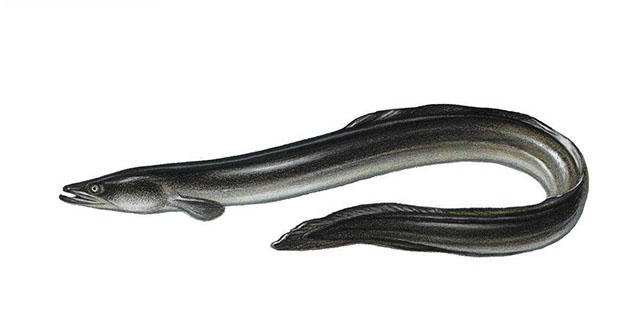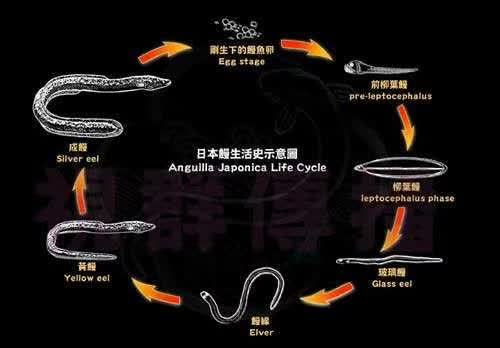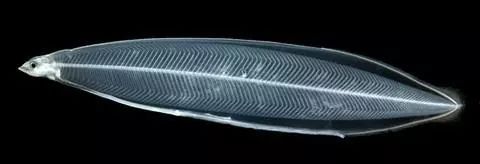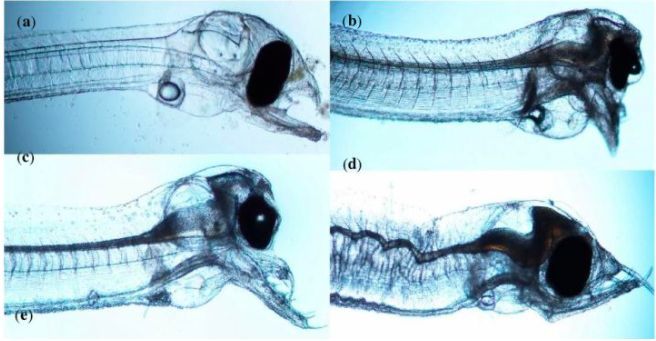Eels can't be reproduce in captivity and are almost the only farmed fish species that rely entirely on fishing for wild fry.
Until now, the only breeding source for farmed eels has been young eels caught in the wild.
Why can't eels be reproduce in captivity? Has been a topic of great interest.

You have to mate with both men and women to reproduce, but eels don't even have sex. Eels are sexless creatures that do not need to mate to reproduce, a theory that has been believed for more than 2,000 years, dating back to ancient Greek philosopher Aristotle.
In 1876, Sigmund Freud, the founder of psychoanalysis, dissected 400 eels in the hope of finding testicles. It turns out that eels are hermaphroditic creatures and can change at any time.
Their gender is restricted by the environment. When there is insufficient food and the population density is high, eels become male; when there is sufficient food and the density is low, they become female.

Where eels mate has been a mystery for thousands of years. It wasn't until the early 1900s that scientists solved the mystery and tracked down the spawning sites of the East Asian eels, which were born near the World's deepest trench, the Mariana Trench.
Eels live in fresh water, but when it comes time to breed, they travel in packs thousands of kilometers to the deepest parts of the ocean to mate and spawn.
When the baby eels grow up, they follow their parents' path across thousands of kilometers from the deep sea to the fresh water of the continent, starting the new cycle of life. Such fish are called migratory fish.

Eel farming has been attempted since the beginning of the last century.
However, it has been found that captive eels, no matter how long they are kept, do not reach sexual maturity and reproduce.
Scientists have tried everything from drinking urine from pregnant women to injecting the eels with sex hormones, but nothing has worked.
It wasn't until 1976 that scientists injected them with pituitary extracts from salmon and carp that the first farmed eels were in season. And this aphrodisiac technique continues to this day.

But artificial reproduce is very difficult. Adult eels, on the other hand, lay their eggs in artificial pools, and the newly hatched fish are called "pre-leptocephalus," which turn into “leptocephalus” when they eat. However, no matter what he was fed, he refused to eat and died more than 20 days later. Raising young eels into the “leptocephalus” stage has long been a human goal.
To develop feed, Japanese scientists fished out “leptocephalus”from the sea and dissected their digestive tracts to see what was inside. Guess what? Nothing!
Some wondered if it didn't eat at all, relying on the surface of its body to absorb nutrients from the sea. Some people guess that digestion is too fast, the stomach can not save things?
The Japanese do not give up, continue to anatomy, finally found something - sea snow. It's a beautiful name, but it's basically a slime of organic debris in the ocean sticking together. They sink slowly toward the ocean floor, like snow. Leptocephalus eats this!
Knowing the recipe, the next step is to make “artificial sea snow”. After failing with fish, shrimp, crab, jellyfish and egg yolks, Japanese researchers have come up with a bizarre recipe: powdered shark eggs and mixed into a paste. After hatching, shark oocytes were fed 0 to 8 days, soybean peptide and krill extract were added into shark oocytes 8 to 18 days, and then multivitamins and complex minerals were added 18 days later.
The young eels touched the feed paste, took a bite, pulled a piece and swallowed it. To eat! After 20 days, they successfully turned into willow eels!

Leptocephalus are as fragile as they can be. They have jaws that can't be closed because they chase artificial sea snow and knock their mouths askew if they accidentally bump into the walls of their breeding ponds.
To solve this problem, the lab had to spend a lot of money on a new device: a circular circular water tank. In addition, if baits, water quality, water flow, temperature, salinity and luminosity are careless, the young eels will stop growing.
It costs up to 1 million yen ($8,500) to raise an eel, including hormones, food and equipment. Even with all this effort, the survival rate of the young eels is only 0-5%.
Although the cost of the second generation of eel larvae has been reduced to a few thousand yen, it takes at least 10 years for the second generation to move from the laboratory to mass production.
Therefore, the eels we now eat are raised by salvaging semi-mature glass eels and elver, but the reproduction of eels is actually dependent on themselves.
In 2010, when eels were finally fully farmed in Japan, transparent Leptocephalus swam happily in a tank at a laboratory. But success has been limited to the laboratory, and it is far from certain that artificially reproduce eels will be commercially available.